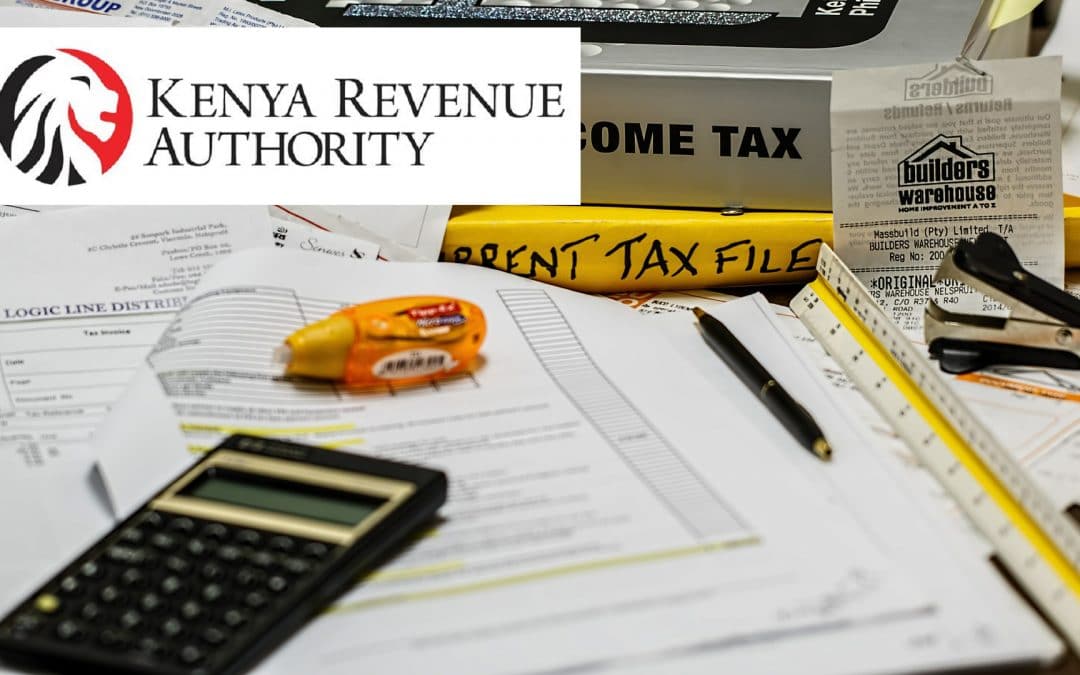Economy, Business & Finance
Kenya Tax Guide for Individuals & Businesses
Filing taxes in Kenya has been made easier through the KRA’s iTax platform. Whether you’re self-employed or run a company, timely compliance avoids penalties. Here’s how to navigate the system smoothly.

Learn how to file taxes in Kenya, understand VAT and income tax rates, explore recent changes, and discover tax incentives for individuals and businesses.
Kenya’s tax system plays a crucial role in funding government operations and development projects.
For both individuals and businesses, understanding how to comply with tax obligations is essential to avoid penalties and benefit from incentives. This guide provides a clear overview of key tax components, including filing requirements, VAT, income tax rates, recent reforms, and common tax incentives in Kenya.
Overview of Kenya’s Tax Authority: KRA
The Kenya Revenue Authority (KRA) is the government agency responsible for tax collection and enforcement. KRA’s mission is to ensure efficient tax administration to support the country’s economic growth. For detailed regulations and updates, the KRA official website is the best source for accurate and timely information.
Income Tax in Kenya: Individual and Corporate Rates
Individual Income Tax
Kenya employs a progressive income tax system for individuals based on monthly earnings. The current rates, as per the Income Tax Act, range from 10% for the lowest income bracket to 30% for the highest earners. Here’s a quick breakdown of the Pay As You Earn (PAYE) brackets for individuals (2024):
- Up to KSh 24,000: 10%
- KSh 24,001 to KSh 32,333: 25%
- Above KSh 32,333: 30%
Personal reliefs and contributions to the National Social Security Fund (NSSF) and National Hospital Insurance Fund (NHIF) are deductible before tax calculations. Visit the Kenya Law website for the full Income Tax Act.
Corporate Income Tax
Businesses in Kenya are generally taxed at a flat rate of 30% on their profits. However, small enterprises registered under the Turnover Tax (TOT) scheme pay 1% on gross sales under KSh 50 million annually. Companies listed on the Nairobi Securities Exchange enjoy a reduced corporate tax rate of 25%. These distinctions encourage business formalization and growth.
Value Added Tax (VAT) in Kenya
VAT is a consumption tax charged on goods and services at each stage of production or distribution. The standard VAT rate in Kenya is 16%, introduced to replace the previous 14% rate in 2019. Certain goods and services, such as basic foodstuffs, water, and medical services, are zero-rated or exempt.
Businesses with a turnover exceeding KSh 5 million per year are required to register for VAT. The process involves submitting monthly VAT returns through the KRA iTax portal. For comprehensive VAT guidelines, see the KRA VAT page.
Filing Taxes: How to Comply
Taxpayers in Kenya must file returns either monthly (for VAT and PAYE) or annually (for income tax). The iTax system, KRA’s online platform, facilitates tax registration, filing, and payment.
For Individuals
Employees pay income tax through their employers via PAYE. Self-employed individuals must register as taxpayers and file annual returns by June 30th each year. Tax compliance certificates issued upon filing are often required for business licensing.
For Businesses
Companies must file monthly VAT returns and remit taxes deducted from employees. Annual corporate tax returns are due within six months after the financial year-end. Businesses can file returns and pay taxes conveniently using the KRA iTax portal.
Recent Changes in Kenya’s Tax Landscape
The government periodically updates tax laws to improve collection and ease compliance. Notable recent reforms include:
- Increase of VAT from 14% to 16% effective in 2019 to expand revenue base.
- Introduction of Digital Service Tax (DST) at 1.5% targeting digital platforms like streaming and online sales, effective from 2021.
- Adjustments in excise duty rates on products such as alcohol, tobacco, and airtime.
- Enhanced penalties for late filing and non-compliance to enforce discipline.
More details on these reforms are published in official government gazettes available on the Kenya Law Reports portal.
Common Tax Incentives and Reliefs in Kenya
To encourage investment and economic activity, Kenya offers various tax incentives:
- Investment Deduction Allowance (IDA): Businesses investing in manufacturing and export can deduct 150% of capital expenditure from taxable income.
- Pioneer Status Incentives: New industries in targeted sectors may enjoy tax holidays for a period up to 10 years.
- Export Processing Zones (EPZ): Firms operating in EPZs benefit from reduced corporate tax rates and VAT exemptions.
- Research and Development (R&D) Incentives: Companies investing in R&D can claim accelerated capital allowances.
For a full list and eligibility criteria, the Kenya Investment Authority provides authoritative guidance.
Common Tax Challenges and How to Avoid Them
Taxpayers often face challenges like filing errors, misunderstanding reliefs, or missing deadlines. Non-compliance can lead to penalties, interest charges, or legal action.
To avoid pitfalls:
- Always register early with KRA and obtain a PIN number.
- Keep thorough financial records and receipts for accurate filing.
- Use the official iTax portal for submissions and payments to avoid fraud.
- Seek professional advice when unsure about tax obligations.
Conclusion: Navigating Kenya’s Tax System
Kenya’s tax system is robust but complex, reflecting the country’s growing economy and regulatory reforms. Both individuals and businesses must stay informed about their tax responsibilities and leverage available incentives to optimize their financial health.
Regularly consult the Kenya Revenue Authority, Kenya Law Reports, and trusted financial advisors to ensure full compliance and maximize benefits within Kenya’s tax framework.
Public Finance & Economic Development
Kenya Sets Q4 2025 Fringe Benefit Tax Rate at 8%
Kenya keeps the deemed interest rate steady at 8% despite recent CBK rate cuts. Businesses can now close their financial year with confidence.

Kenya Revenue Authority retains the fringe benefit and deemed interest tax rate at 8% for Q4 2025, reinforcing stability for employers.
NAIROBI, Oct. 26, 2025 — The Kenya Revenue Authority (KRA) has maintained both the fringe benefit tax (FBT) market interest rate and the deemed interest rate at 8 percent for the final quarter of 2025. This decision, announced on October 21, underscores KRA’s commitment to providing predictability in tax administration amid recent monetary easing.
Employers must apply an 8% market interest rate when valuing fringe benefits such as staff loans and other non-cash perks. The 8% deemed interest rate also applies to employer or shareholder loans where no interest is charged. From these amounts, a 15% withholding tax must be deducted and paid to the Commissioner within five working days, according to Bloomberg Tax.
Steady Policy Despite Rate Cuts
The 8% rate remains unchanged even after the Central Bank of Kenya (CBK) reduced the benchmark Central Bank Rate to 9.25% from 9.50% earlier this month. The move was intended to stimulate borrowing amid moderating inflation.
By keeping the FBT and deemed interest rates steady, KRA separates tax computation from short-term monetary fluctuations. This prioritizes predictability for employers and payroll systems. The Q4 rate covers October through December 2025 and serves as a reference for year-end tax planning.
Employer and Payroll Implications
Fringe benefit tax applies when employers provide non-cash benefits like low-interest loans, housing, or vehicles. Under Section 12B of the Income Tax Act, employers must compute taxable value using a prescribed market rate. Section 16(2)(ja) imposes a deemed interest charge on interest-free or below-market loans from foreign affiliates or related parties.
“The 8% benchmark provides continuity for businesses closing their financial year,” said a Nairobi-based tax consultant advising multinational firms. “Predictable reference rates help employers comply and avoid last-minute recalculations.”
Some experts warn that a fixed rate may not always reflect market conditions. If lending costs fall below 8%, the FBT may overstate taxable values. Conversely, if commercial lending rises, the rate may understate employees’ benefit costs.
The Legal Notice
KRA’s official notice states:
“For the purposes of Section 12B of the Income Tax Act, the Market Interest Rate is 8%. This rate shall apply for October, November, and December 2025. For the purposes of Section 16(2)(ja) of the Income Tax Act, the prescribed rate of interest is 8%. Withholding tax at 15% on the deemed interest shall be deducted and paid to the Commissioner within five working days.”
The language mirrors the previous quarter’s directive, showing KRA’s preference for consistent FBT and deemed interest rates.
Market Reaction
Industry bodies have welcomed the move. The Institute of Certified Public Accountants of Kenya (ICPAK) said the stable tax reference improves predictability for financial reporting. “A consistent rate enables employers to make reliable projections on payroll and tax obligations,” the institute noted.
Analysts caution that future adjustments may be necessary if interest rates diverge significantly. For now, the 8% benchmark is seen as a prudent choice, offering stable compliance for employers and multinational subsidiaries through year-end.
Compliance Checklist
Tax experts advise employers to:
- Update payroll and benefits systems to reflect the 8% rate for Q4 2025.
- Reassess employee loan portfolios to ensure correct FBT calculations.
- Remit withholding tax on deemed interest within five working days.
- Document compliance with KRA’s circular for audit readiness.
- Monitor new notices for Q1 2026 adjustments.
Maintaining the same rate for two consecutive quarters reduces mid-year recalculations and supports corporate financial stability.
Fiscal Context
The decision aligns with Kenya’s broader effort to strengthen domestic revenue and maintain fiscal stability under the Medium-Term Revenue Strategy. It also complements reforms aimed at simplifying compliance and broadening the tax base without sudden shocks to the private sector.
As 2025 winds down, tax consistency is becoming a key feature of the government’s fiscal agenda. With borrowing costs stabilizing and inflation easing, Kenya’s 8% fringe benefit benchmark offers certainty to employers, investors, and auditors alike.
Public Finance & Economic Development
Kenya Launches Sovereign Wealth Fund
Kenya has launched the Kenya Sovereign Wealth Fund to manage oil, gas, and mineral revenues unveiled on Oct. 25, 2025. The fund aims to shield the economy from commodity shocks and secure savings for future generations.

Kenya unveils a sovereign wealth fund on Oct. 25, 2025 to manage oil and mineral income, ensuring fiscal stability and growth.
Kenya Launches Sovereign Wealth Fund for Oil and Minerals
NAIROBI, Oct. 26 — Kenya has launched a sovereign wealth fund to manage income from its growing oil, gas, and mineral resources. The move aims to protect the economy from price shocks and, in turn, create a long-term financial buffer for citizens.
A New Model for Resource Management
The Kenya Sovereign Wealth Fund (KSWF), unveiled on Oct. 25, 2025, will pool revenues from crude oil in Turkana County, natural gas in the Lamu Basin, and minerals such as gold, titanium, and rare earth elements. In addition, the government says the fund will improve fiscal planning and stabilize spending.
The structure mirrors successful examples such as Norway’s Government Pension Fund Global and Botswana’s Pula Fund, which have helped countries convert volatile resource income into steady growth.
Finance Minister John Mbadi emphasized that the fund will promote fiscal discipline and inter-generational equity.
“This is about turning our natural resources into lasting financial assets,” Mbadi said during the Nairobi launch.
The KSWF will operate through three divisions — a Stabilization Fund to offset oil-price swings, a Savings Fund for long-term investment, and a Development Fund to finance key infrastructure. Furthermore, a professional board under Treasury supervision will ensure compliance and transparency.
Funding and Governance Structure
Kenya’s initial contribution amounts to Sh100 billion ($640 million), drawn from royalties, profit oil, and mineral income. Future inflows will include budget surpluses and returns from fund investments.
The International Monetary Fund (IMF) noted that the KSWF could strengthen Kenya’s fiscal resilience as public debt nears Sh10 trillion ($64 billion). Consequently, the IMF has encouraged clear reporting rules and risk-management frameworks.
Experts agree the timing is critical. “Establishing the fund before production peaks is a smart move,” said Faith Odinga, an economist at the Kenya Institute for Public Policy Research and Analysis (KIPPRA). “It will help Kenya avoid the overspending that often undermines resource economies.”
Other African nations, including Ghana and Nigeria, have set up similar funds. However, Kenya plans to improve governance by publishing quarterly reports and commissioning independent audits.
“Full disclosure is the only way this fund will earn public trust,” said Samuel Karanja of Transparency International Kenya. “As a result, citizens will see exactly where their money goes.”
Global Context and Local Impact
Global demand for critical minerals such as lithium and niobium continues to rise, and, therefore, Kenya has become an attractive destination for investors. The government has signed exploration deals with companies from Australia, China, and the United Arab Emirates to accelerate production.
Locally, community leaders are pushing for fair revenue sharing. Governor Jeremiah Lomorukai of Turkana said part of the fund should finance schools, hospitals, and roads in producing regions. “Communities must see visible benefits from their resources,” he said.
The KSWF aligns with Kenya’s Vision 2030 blueprint, which emphasizes industrialization and sustainable resource management. Moreover, economists believe the fund can attract foreign direct investment while stabilizing public finances.
“Kenya is taking a forward-looking step,” said Anne Mugo of Standard Investment Bank. “Turning finite resources into consistent income can, in turn, transform the economy.”
The Treasury expects to finalize KSWF regulations by March 2026, with the first inflows projected before year-end. In the meantime, it will hold public consultations to strengthen governance and community participation.
If implemented well, the sovereign wealth fund could redefine how Kenya converts its natural riches into shared prosperity. As a result, the initiative may become a model for other emerging economies seeking fiscal stability amid commodity volatility.
Banking, Finance & Economic Policy
Ethiopia’s birr tipped to rebound after gold export surge
Gold exports hit a record $3.5 billion, overtaking coffee for the first time in Ethiopia’s history. The boom has narrowed the gap between official and parallel exchange rates, strengthening the birr’s outlook.

Ethiopia’s birr, Africa’s weakest currency in 2025, is set to strengthen as gold exports rise and IMF-backed reforms boost confidence.
ADDIS ABABA, Oct 24 (Charles Wachira) —
Ethiopia’s birr, Africa’s weakest currency in the first eight months of 2025, is expected to strengthen in the coming months. Rising gold exports and IMF-supported reforms are driving optimism for a recovery.
The projection follows the World Bank’s Africa’s Pulse report, which listed South Sudan and Ethiopia as the continent’s weakest-performing currencies this year.
Central Bank Eyes Turnaround
Eyob Tekalign, the new Governor of the National Bank of Ethiopia (NBE), told Bloomberg that the public should expect a stronger birr soon.
“For those banking on just depreciation, I would say re-look at your playbook,” Tekalign said, signaling confidence in the local currency.
The birr has lost nearly two-thirds of its value since the government floated the exchange rate in late July. Authorities, however, believe the fall is temporary.
Foreign exchange shortages and inflationary pressures had weakened the currency, but higher export earnings are starting to support the economy.
Gold Exports Outshine Coffee
Gold shipments overtook coffee for the first time in the fiscal year ending July 7, reaching US $3.5 billion, up from US $409 million a year earlier, according to Prime Minister Abiy Ahmed.
Coffee exports also rose to US $2.65 billion from US $1.4 billion. The recovery stems from the reopening of Midroc Gold Mine Plc and better incentives for small-scale miners. These measures reduced smuggling and channelled more gold through official markets.
The export surge strengthens Ethiopia’s external position and reflects the benefits of the reform agenda.
Reforms Narrow the FX Gap
The IMF-backed reforms include foreign-exchange liberalisation, inflation control, and measures to boost industrial competitiveness. These steps have started narrowing the gap between official and parallel exchange rates.
Tekalign, who previously served as state minister for finance, said exporters are changing behaviour.
“Exporters were not getting the full price of their exports. Many sold through informal routes or neighbouring countries,” he said.
Improved access to foreign currency is also reviving manufacturing. Factory capacity utilisation has risen to around 60 % as raw materials and machinery become easier to import.
Debt Talks Regain Momentum
A stronger external position has boosted Ethiopia’s credibility in debt-restructuring talks with holders of its US $1 billion eurobond. Some investors had doubted the government’s projections earlier this year.
The Africa’s Pulse report noted that the Ethiopian birr and South Sudanese pound each lost more than 10 % of their value in 2025. While recognising progress in FX reforms, the World Bank warned that limited access to dollars still fuels a wide parallel-market premium.
To restore stability, the central bank introduced new measures — publishing FX fees, capping bank charges, and raising limits on dollar sales for imports, business travel, and personal use.
Outlook: Cautious Optimism
Analysts say rising gold exports, ongoing reforms, and improved investor confidence could help stabilise the birr before year-end. However, sustained progress will depend on export diversification, fiscal discipline, and continued policy consistency.
-

 Politics, Governance & Regional Affairs6 days ago
Politics, Governance & Regional Affairs6 days agoRaila Odinga’s Death Tests ODM Unity
-

 Celebrities, Creatives & Public Figures7 days ago
Celebrities, Creatives & Public Figures7 days agoCaptain John Kiniti: Kenya’s First African Pilot
-

 Regional Security & Peacebuilding7 days ago
Regional Security & Peacebuilding7 days agoKabila’s Nairobi Meeting Deepens DRC–Kenya Rift
-

 Banking, Finance & Economic Policy4 days ago
Banking, Finance & Economic Policy4 days agoMacharia to Lead Sidian Bank’s Revival
-

 Celebrities, Creatives & Public Figures5 days ago
Celebrities, Creatives & Public Figures5 days agoWPP-Scangroup Names Owusu-Nartey as CEO
-

 Banking, Finance & Economic Policy6 days ago
Banking, Finance & Economic Policy6 days agoKenya Banks Poised for Strong Q4 Rebound
-

 Human Rights & Social Justice7 days ago
Human Rights & Social Justice7 days agoRwanda Targets Exiled Critics with Sanctions
-

 Banking, Finance & Economic Policy5 days ago
Banking, Finance & Economic Policy5 days agoEthiopia Caps Foreign Bank Ownership at 49%










